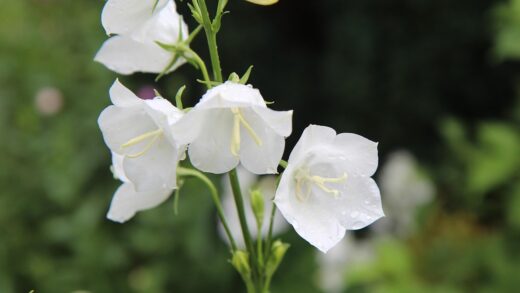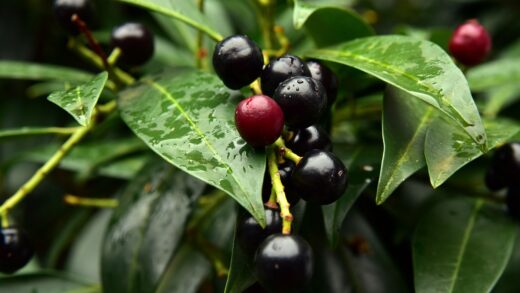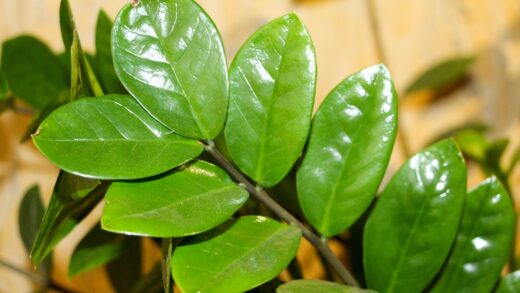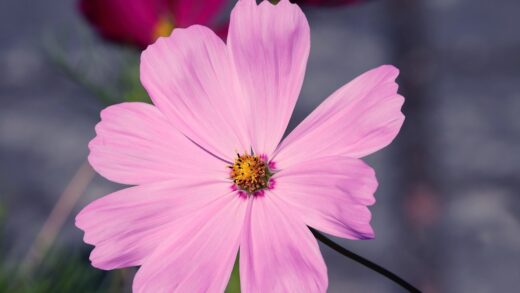Pruning and cutting back are essential maintenance practices that, while seemingly simple, play a significant role in the health, appearance, and longevity of an elecampane plant. Unlike the intricate pruning required for shrubs or trees, the approach for this herbaceous perennial is more straightforward, primarily involving seasonal cleanup and occasional maintenance. However, understanding the purpose behind each cut and the correct timing for these tasks is key to maximizing their benefits. Proper pruning not only keeps the plant looking tidy but also encourages healthy growth, can extend the blooming period, and helps to prevent the spread of diseases. This guide will detail the various aspects of pruning elecampane, from the main seasonal cutback to in-season maintenance like deadheading.
The primary act of pruning for elecampane is the annual cutting back of its top growth at the end of the season. As an herbaceous perennial, the plant’s stems and leaves naturally die back to the ground with the onset of winter. The pruning is essentially a cleanup task that removes this dead material. This is important for both aesthetic and horticultural reasons. Aesthetically, it removes the unsightly dead stalks, leaving the garden bed looking neat and tidy for the winter. Horticulturally, it is a crucial sanitation practice that eliminates overwintering sites for pests and fungal spores that could cause problems in the following season.
Beyond the main autumn cutback, there are other minor pruning tasks that can be performed during the growing season to keep the plant in top condition. One such task is deadheading, which is the practice of removing spent flower heads. For elecampane, this can encourage the plant to produce a secondary flush of smaller blooms, thereby extending its flowering season. It also prevents the plant from setting seed, which is desirable if you wish to control its spread, as elecampane can self-sow quite readily in favorable conditions.
In some cases, a technique known as the “Chelsea chop” can be employed on elecampane, though it is more commonly used on other tall perennials. This involves cutting back the stems by about a third in late spring (around the time of the Chelsea Flower Show in the UK, hence the name). This practice can result in a slightly shorter, sturdier, and more compact plant that may not need staking, and it can also delay the flowering time. This can be useful for managing the plant’s height or for staggering bloom times in a perennial border.
Finally, pruning can also be a reactive measure to address any problems that arise during the season. This includes trimming away any leaves that show signs of disease, such as powdery mildew, to help slow its spread. It also involves cutting out any stems that may have been damaged by wind, pests, or garden traffic. Having a sharp, clean pair of pruners on hand allows you to quickly address these minor issues, maintaining both the health and the attractive appearance of your elecampane throughout the growing season.
More articles on this topic
The purpose of pruning elecampane
The most fundamental reason for pruning elecampane is to manage its life cycle as an herbaceous perennial. The annual cutback in autumn is a response to the plant’s natural process of senescence, where the above-ground parts die back to prepare for winter dormancy. By removing this dead material, the gardener is essentially tidying up after nature and preparing the plant and the garden bed for the dormant season. This act prevents the dead stalks from breaking and scattering messily around the garden during winter storms.
Disease and pest prevention is another primary objective of pruning. The dead stems and decaying leaves of elecampane can provide the perfect shelter for fungal spores, such as those that cause powdery mildew, to survive the winter. Pests and their eggs can also find refuge in the hollow stems and debris. By cutting back the plant and clearing away all the material from the ground, you are significantly reducing the source of potential infections and infestations for the following spring. This single act of sanitation is one of the most effective preventative healthcare measures you can take for your plant.
Pruning during the growing season, specifically deadheading, serves to redirect the plant’s energy. After a flower is pollinated, the plant’s primary goal is to produce viable seeds. This process requires a significant amount of energy. By removing the fading flower heads before they can set seed, you signal to the plant that its reproductive effort has failed. This often prompts the plant to use its energy reserves to produce more flowers in a second attempt to reproduce, effectively extending the bloom time for the gardener’s enjoyment.
Another purpose of pruning is to control the plant’s size and shape, and to manage its spread. As mentioned, deadheading prevents self-seeding, which is important if you do not want dozens of elecampane seedlings popping up throughout your garden. Cutting the plant back in late spring can also be used to create a shorter, more compact specimen that is less likely to flop, which can be particularly useful in smaller gardens or in very windy locations. This type of formative pruning gives the gardener a degree of control over the plant’s final form.
More articles on this topic
When to prune
The timing of pruning activities is crucial for them to be effective and beneficial to the plant. The main and most significant pruning event for elecampane is the autumn cutback. This should be performed after the plant’s foliage has been killed by a few hard frosts and has completely withered and turned brown. It is important to wait for this to happen naturally, as cutting the plant down while the leaves are still green would prevent it from completing the vital process of drawing nutrients and energy from the foliage down into its storage root for the winter. Typically, this task is carried out in late autumn.
Deadheading should be done throughout the plant’s flowering period in the summer. As soon as a flower head begins to fade, lose its color, and look tattered, it can be removed. This is an ongoing task that can be done every week or so while the plant is in bloom. By staying on top of deadheading, you can keep the plant looking fresh and encourage the maximum number of secondary blooms. If you wish to collect seeds or allow the plant to self-sow, you should leave some of the later flower heads on the plant to mature.
If you choose to perform a “Chelsea chop” to control the plant’s height, the timing is very specific. This cut should be made in late spring, typically in late May or early June, depending on your climate zone. The plant should be well-established and have a good amount of leafy growth at this point. Cutting it back too early may set it back too far, while cutting it too late can sacrifice the season’s flowers altogether. It is a technique that requires a bit of confidence and is best trialed on a portion of a clump first.
Pruning to remove damaged or diseased parts of the plant should be done as soon as you notice the problem, regardless of the time of year. Whether it is a stem broken by wind in mid-summer or the first signs of powdery mildew on the lower leaves, prompt removal is key. Removing diseased foliage immediately can help to prevent the pathogen from spreading to the rest of the plant. Similarly, trimming off a broken stem cleanly will prevent it from tearing further down and creating a larger wound that could be an entry point for disease.
Techniques for cutting back
When it comes time for the main autumn cutback, the technique is simple and straightforward. You will need a pair of sharp, clean secateurs, loppers, or garden shears. Ensure your tools are sharp to make clean cuts rather than crushing the stems, which can create entry points for disease. It is also good practice to clean your tools with rubbing alcohol or a disinfectant spray before and after use to prevent the transmission of any pathogens between plants.
Once the plant’s top growth has completely died back after a frost, you can proceed to cut down all of the stems. Make the cuts about 10 to 15 centimeters (4-6 inches) above the ground level. There are two main reasons for leaving these short stubs. First, they serve as a marker, making it easy to see where your dormant plant is located so you do not accidentally damage its crown when working in the garden bed in late winter or early spring. Second, these hollow stubs can help to trap insulating snow around the base of the plant.
After cutting down all the stems, the next crucial step is to gather all of the removed material and any fallen leaves from around the base of the plant. This cleanup is a vital part of garden hygiene. This debris should be removed from the garden bed. If the plant was healthy all season, this material can be chopped up and added to your compost pile. However, if there was any sign of disease like powdery mildew, it is safer to dispose of the material by burning it or putting it in with your household waste.
For larger, more established clumps of elecampane, the number of stems can be quite substantial, and a sturdy pair of loppers might be more efficient than hand pruners for cutting through the thick stalks. Work your way around the clump, cutting a section at a time and clearing the debris as you go. Once the cutback and cleanup are complete, you can then apply a layer of winter mulch over the crown to provide protection for the dormant roots.
Deadheading and maintenance pruning
Deadheading is the practice of removing spent flowers, and it is the primary form of maintenance pruning for elecampane during the summer. To deadhead, identify a flower that has passed its peak. Follow its stem down to the first set of healthy leaves or to a point where you see a new side shoot or bud emerging. Make a clean cut at this point using a pair of secateurs or even just your fingers for the smaller side stems. This not only tidies the plant’s appearance but also channels its energy into producing new flowers rather than seeds.
The extent to which you deadhead is a matter of personal preference and goals. If your aim is to maximize the length of the blooming season, you should be diligent about removing flowers as they fade. If, however, you enjoy the appearance of the seed heads or wish to provide food for seed-eating birds like goldfinches over the winter, you can opt to leave some or all of the flower heads in place after the main flush of blooms is over. The architectural form of the dried seed heads can add visual interest to the winter garden.
Maintenance pruning also involves looking over the plant periodically for any signs of damage or disease. Inspect the leaves, especially the lower ones that are more shaded and have less air circulation, for any signs of powdery mildew. If you spot the tell-tale white powder, prune off the affected leaves immediately and dispose of them to help contain the spread. This is much more effective when the infection is caught in its early stages.
Similarly, if a stem gets broken by wind, a passing animal, or during garden activities, it should be pruned back cleanly. Find the point where the break occurred and cut the stem just below the damage, ideally just above a leaf node. A clean cut will heal more quickly than a ragged tear and is less likely to become an entry point for disease. This kind of routine monitoring and tidying will keep your elecampane looking its best and in robust health throughout the entire growing season.
Post-pruning care
After the main autumn cutback, the most important post-pruning care you can provide is the application of a winter mulch, especially in colder climates. Once the dead top growth has been cut down and cleared away, and after the first light ground frost, apply a 10-15 centimeter layer of a light, airy mulch like shredded leaves or straw over the plant’s crown. This will insulate the roots from the damaging effects of freeze-thaw cycles, ensuring the plant overwinters safely and is ready for vigorous growth in the spring.
Following any pruning during the growing season, such as deadheading or removing diseased leaves, the plant generally does not require any special care. These are minor cuts that the plant will heal from quickly on its own. However, if you have had to do significant pruning to remove a large, damaged section of the plant, or if the plant is under stress from drought or heat, ensuring it is well-watered can help it to recover more quickly from the stress of being pruned.
If you perform the “Chelsea chop” in late spring, cutting the plant back by a third, it is beneficial to provide some follow-up care. Water the plant thoroughly after pruning, and consider giving it a light feed with a liquid organic fertilizer. This will provide the moisture and nutrients it needs to recover from the pruning and to quickly push out the new flush of growth that will result in a bushier plant and a later bloom.
Ultimately, the best post-pruning care is simply to continue providing good overall care for the plant. Pruning is just one component of a holistic approach to plant health. By ensuring the elecampane has the right conditions—adequate sun, consistent moisture, and fertile soil—you are creating a resilient and vigorous plant that will respond well to pruning and recover quickly. A healthy plant is always better equipped to heal wounds and resist any potential infections at the pruning sites.


















